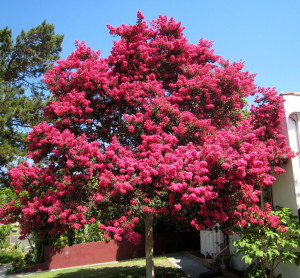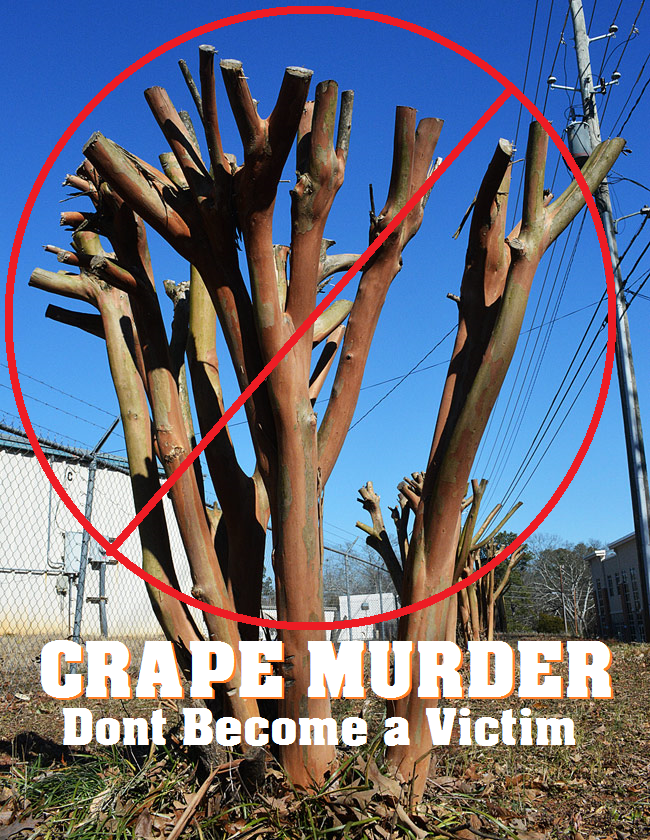There are very few shrubs and trees in North Carolina that can compete with the rich and vibrant colors of a Crape Myrtle in full bloom.
We often see Crape Myrtles that have been improperly pruned and topped. Crape Murder is what we jokingly call it. All jokes aside this type of tree pruning is bad for the tree and your wallet. Crape Myrtle trees are usually topped under the assumption that doing so will yield more flowers or create a better shape in the year to come. This is untrue and actually does the exact opposite. It is a common misconception that topping will yield more flowers. When in reality topping can actually cause a delay in the flowering process and shorten bloom times. Not to mention it will look like a group of bare sticks that are stuck in the ground for months. When it finally does develop new growth it will be a grouping of small fast growing stems that will have an undesired weeping growth pattern and a poor attachment. Topping can also cause the tree to become stressed and make it more likely to develop health problems. Proper pruning will create a beautiful tree with a graceful look that will last for years to come.
Ordinarily Crape Myrtles require very little annual pruning. We recommend removing branches that are crossing or rubbing one another, branches that are weakly attached and dead or dying branches. We also prune to assist with clearance of structures such as houses and buildings, power lines and driveways. If you find your crape myrtle frequently needs excessive or severe pruning to fit within a desired space it may be time to consider replacing it with a smaller variety. Once a Crape Myrtle has been topped it will require attention every year after that to maintain a shape that is acceptable.
Crape myrtle varieties that mature to a height between 6 and 15 feet include ‘Comanche’ (dark pink flower) ‘Hopi’ (light pink flower ) ,Acoma’ (white), ‘Tonto’ (red blooms) and ‘Zuni’ (lavender colored flowers). Smaller compact Crape Myrtles that will mature to a height between 3 and 6 feet are ‘Victor’ (red). ‘Ozark Spring’ (lavender) and ‘Hope’ (white). The larger Crape Myrtle varieties are usually resistant to mildew while the smaller ones are not.
The best time to prune is late January through early March. Pruning during this time will ensure that the tree is dormant. It will increase flower production and improve the trees health. Some people like to prune in fall. We advise against this. Pruning in the fall will leave the tree open to the worst of a harsh winter and could have damaging effects.
Please do not hesitate to contact us for a free onsite evaluation of your Crape Myrtles or any other trees. We would love the opportunity to meet with you and your trees and discuss your tree pruning needs

.
